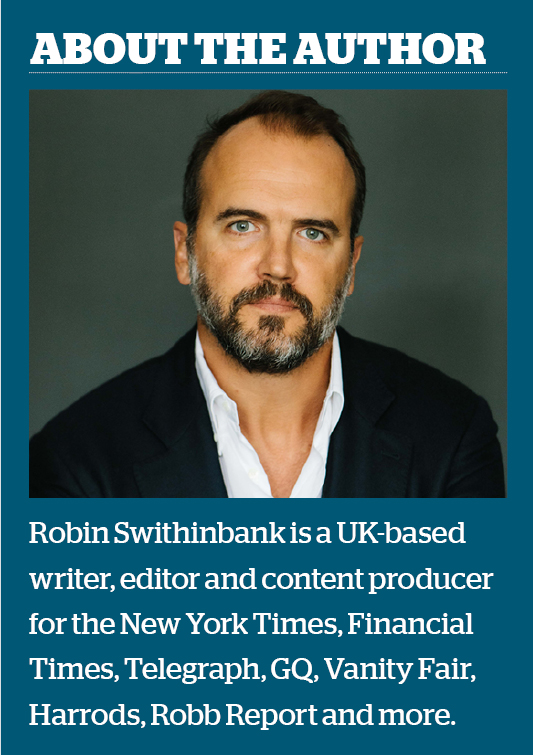A tale of our age, this month. A few weeks back, I was at a watch brand event where hacks like me were greatly outnumbered by influencers, that is, those there to tell the story of themselves, rather than the story unfolding before them (really wish there were no ‘I’ in storytelling – #amiright?).
This is normal, now.
Despite myself, I got talking to one of them, a twenty-something who had quit their job to focus on doing their ‘own thing’, namely building up a profile and an audience they could then monetise.
And why not? The door is open if your head is big enough.
We followed each other on Instagram (what is this ‘business card’?), as seems to be the fashion, and went our separate ways.
All of two days later, they unfollowed me.
Fair enough; hairy wrist shots, the odd fast car and a penchant for a filter that makes everything look like its shot through the sinews of a decaying bin liner may not be to everyone’s taste.
And frankly, judged by its size, my IG following is a pin prick on the moon.
I’m of little value to a follower addict. But two days? I really was quite shocked. And, as is my right it seems, offended.
It set me thinking. If that’s how deep these people go, how long before they move on from the watch category, especially given they don’t care about it in the first place?
Because they will.
There’ll always be something better for one’s own thing.
Something that will make one’s following bigger and more valuable to potential suitors: ie paying brands. And so they’ll migrate there.
Although, that’s assuming they don’t get bored first.
Eventually, this business of ‘grafting’ and ‘dominating’ – the motivational verbs of choice among the influencer generation – must get tiring.
Choosing which free clothes to wear, deciding who to gravitate towards at parties and taking photos of yourself living something called ‘your best life’ will become work.
And work is hard.
And when things are hard, the flimsy snap, and look for something else.
Believe me, I know. I’ve posted four pictures of myself in a lift on Instagram over the years, and I’m exhausted (insert gag here about being ‘wrong on so many levels’).
I’m not sure I can be bothered any more. Although I would absolutely get another selfie with Kylie.
View this post on Instagram
And that’s assuming we don’t bore of them even before that.
People, real people, are growing tired of influencers, too.
Marketing types are calling this ‘influencer fatigue’, and – let the record show – apparently it isn’t just the preserve of middle-aged men with a crushing superiority complex.
According to market research firm GWI, Gen Z are falling out of love with influencers, with engagement levels among that demographic falling 12% since 2020.
The backlash, spineless though it is, is ‘deinfluencing’, whereby – and bear with me here – influencers film themselves telling us what NOT to buy. By my reckoning, that’s still textbook influencer behaviour, but let’s go with it.
What does all this mean for the watch business? The challenge for any brand is to be relevant and to make the kind of noise that ushers consumers across your threshold.
But in a sector selling ephemeral values such as eternity and authenticity, the empty enthusiasm of a plastic, self-actualising neophyte won’t cut it.
It might burnish your brand temporarily, but long term it will tarnish it. Substance finds no home in bathroom-mirror selfies.
Too many brands are falling into the trap, though. And we’re not just talking about parties and guest lists. The quest for desirability has become all-consuming.
Talking with industry colleagues of a decade and more’s experience, we’ve never known a season when brands have focused so hard on how they look and so little on what they do.
There’s little of creative or engineering merit to speak of. Brand storytelling is wrapped up in recording who wore what and where, not who made what and why.
I’m no tech-head, but the intellectual apathy creeping into this game is there for all to see. And it’s corrosive.
Don’t get me wrong. I’m not saying the influencer strategy isn’t working. Bottom line: today, it is. But like moths to a flame, watch brands are being conned by the brightness of the light.
But hang on, you might say. Last month, you wrote about how brands should see their watches not as product, but as sex. And you’d be right. I did.
But like anything else, sex is a spectrum. Some of it’s good and pure and rewarding, and some of it’s trash.
And the influencification of watches is like the pornification of sex.
Ultimately, what people are buying into with a luxury watch is not lipstick enthusiasm and fleeting (paid-for) praise.
 They’re buying into something beautiful and dependable, a memory capsule that also does something useful.
They’re buying into something beautiful and dependable, a memory capsule that also does something useful.
And endless pictures of fawning people at parties with gossamer smiles pushing products they’ve been paid to promote won’t deliver any of that.
This industry didn’t get where it is today by bowing to fads. And it won’t find a future if it decides it should now.
It’s time to wind back the influencer strategy. Heck, de-influence it if you have to. Before the dustbin of history catches up with you.
Oh, and for the record, that influencer who chose to ditch me? I unfollowed them back. I’m not proud.


Very good piece, Robin. Thought-provoking, as usual. If it’s any consolation, I’ve started following you on Instagram. That Jaguar with the smoking brakes does seem like a last hurrah for a world of motoring that, sadly, we need to leave behind. Keep up the thoughtful writing – those of us with attention spans very much appreciate it.
‘Fashions change, Icon’s are forever’, Influencers, Brand Faces, it’s about what’s inside!
Hi Michael, thank you for kind comment – and for the follow. And albeit this is a further act of self-indulgence, for recognising the difference between having influence and being an influencer.
It may be a killer, but there is hope.
Good piece Robin. To be honest, for a while now I started to take brands who are so much “depending” on these clueless influencers less serious. It’s a very short-term strategy and it shows you (brands) don’t take your audience / clients very seriously. Today’s clients are smart, and they definitely see through the shallow advertising from influencers who wear brand x today and brand y in a week from now. Whoever pays them (in watches).
Brilliant!! Thanks, Robin. What you have said very much needs to be said.
The reality of using influencers in marketing. That was a vivid description of the reality in this very competitive industry of watchmaking. The most important is still the brand quality, the storytelling of how a finished product is made plus the client’s engagement to the watch brand. As a brand, it is our obligation to deliver the expectations of the client for they are the absolute influencer or ambassador. Bravo @Robin for this article!